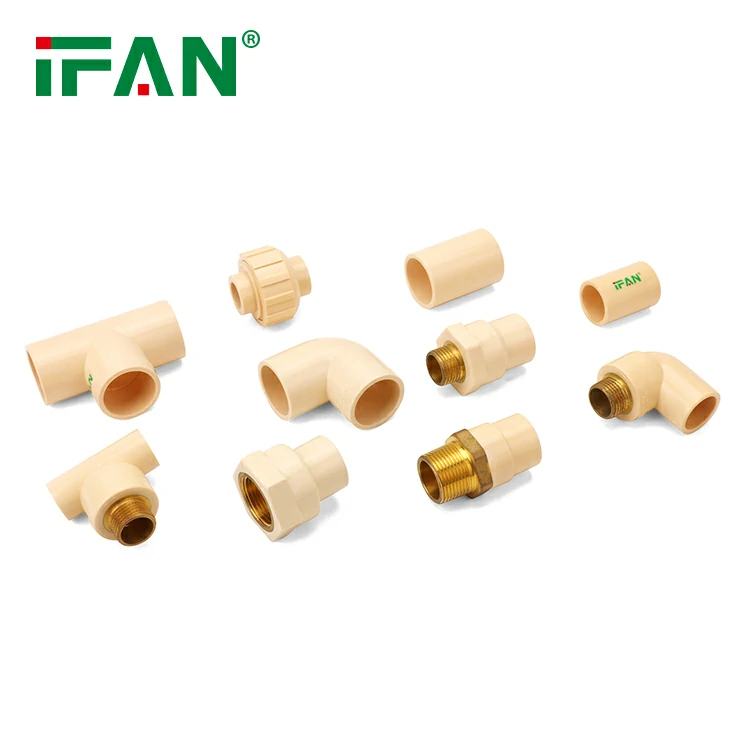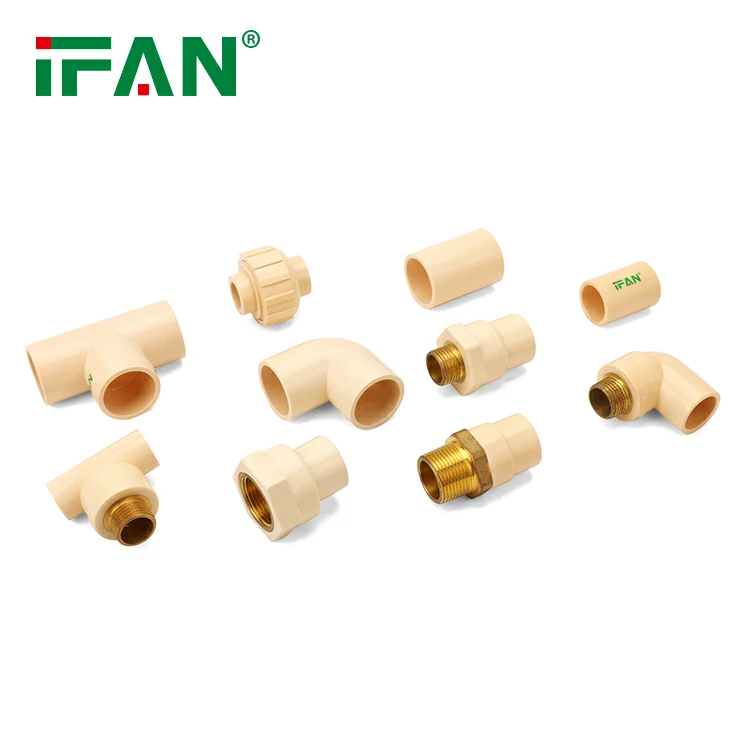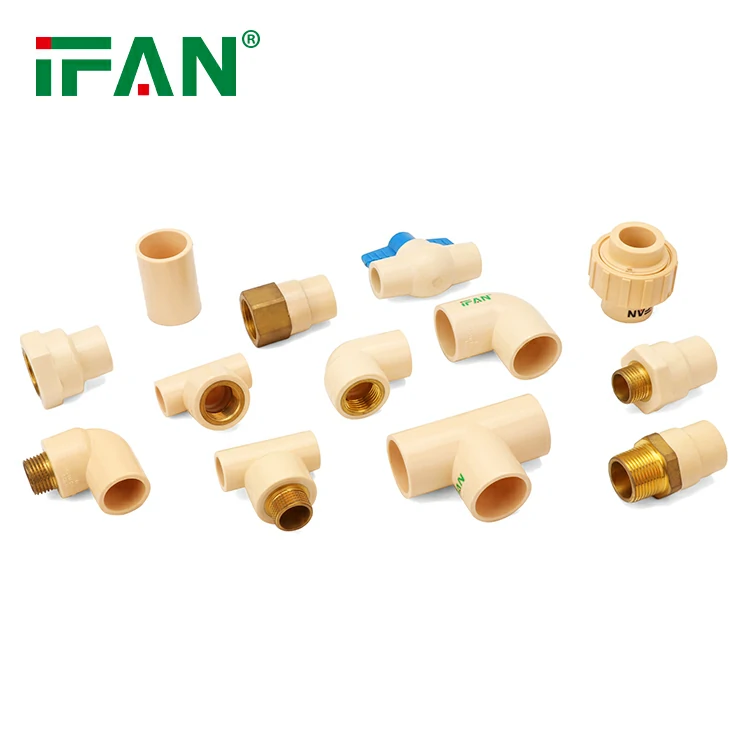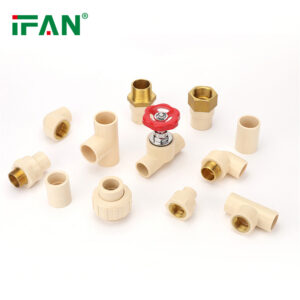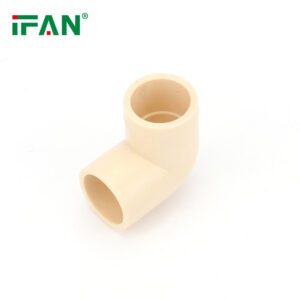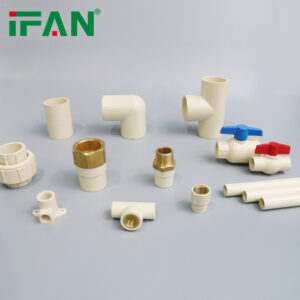Description
IFAN factory 30+ years manufacture experience support color /size customization support free sample.Welcome to consult for catalog and free samples.This is our Facebook Website:www.facebook.com,Click to watch IFAN’s product video.Compared with Tomex products, our IFAN products from quality to price are your best choice, welcome to buy!
Introduction to CPVC Fittings
CPVC (Chlorinated Polyvinyl Chloride) fittings are a popular choice for plumbing systems due to their corrosion resistance, ease of installation, and durability. CPVC pipes and fittings are commonly used in residential, commercial, and industrial applications for hot and cold water distribution, as well as in fire sprinkler systems. However, like all plumbing materials, CPVC fittings may experience issues over time. This article will explore some of the most common problems associated with CPVC fittings and provide solutions for troubleshooting and fixing them.
1. Leaks in CPVC Fittings
Problem: One of the most common issues with CPVC fittings is leaks, which can occur at joint connections or along the pipes. Leaks can be caused by several factors, including improper installation, excessive pressure, or degradation of the material over time.
Solution: If you notice leaks around a CPVC fitting, the first step is to inspect the joint for any visible damage or gaps. Often, leaks occur due to improper solvent welding during installation. Ensure that the pipe and fitting are cleaned and primed before applying the adhesive. If the leak persists, disassemble the fitting, clean the surfaces, and reapply the solvent cement. For persistent leaks, replacing the fitting may be necessary.
2. CPVC Fittings Cracking or Breaking
Problem: CPVC fittings are known for their high resistance to corrosion, but they can become brittle over time, especially when exposed to extreme temperatures or pressure. Cracking or breaking of CPVC fittings is more common in cold environments or areas with fluctuating temperatures.
Solution: To prevent cracking, avoid exposing CPVC pipes and fittings to extreme temperature changes. When installing CPVC fittings in colder climates, ensure the system is properly insulated. If a fitting has already cracked, it will need to be replaced. When replacing a broken fitting, ensure the replacement part is of the same specification and material grade as the original.
3. Discoloration or Degradation of CPVC Fittings
Problem: Over time, CPVC fittings may become discolored, typically turning yellow or brown. This discoloration can be due to exposure to UV light, high temperatures, or chemicals within the water supply.
Solution: Although discolored CPVC fittings do not always indicate a functional problem, it can be a sign of degradation. To prevent further degradation, consider installing UV-resistant protective covers or placing the pipes in locations that are not exposed to direct sunlight. If the degradation has caused the pipe to become brittle or weakened, it’s crucial to replace the fitting as soon as possible.
4. Blockages in CPVC Fittings
Problem: Blockages in CPVC fittings are often caused by debris or mineral buildup over time, especially in areas with hard water. These blockages can restrict water flow and result in lower water pressure.
Solution: To address blockages, first inspect the fittings for any signs of debris or buildup. A common solution is to flush the pipes with a cleaning solution specifically designed for CPVC systems. If the blockage is severe, it may be necessary to remove the fitting and clean it manually or replace the fitting entirely.
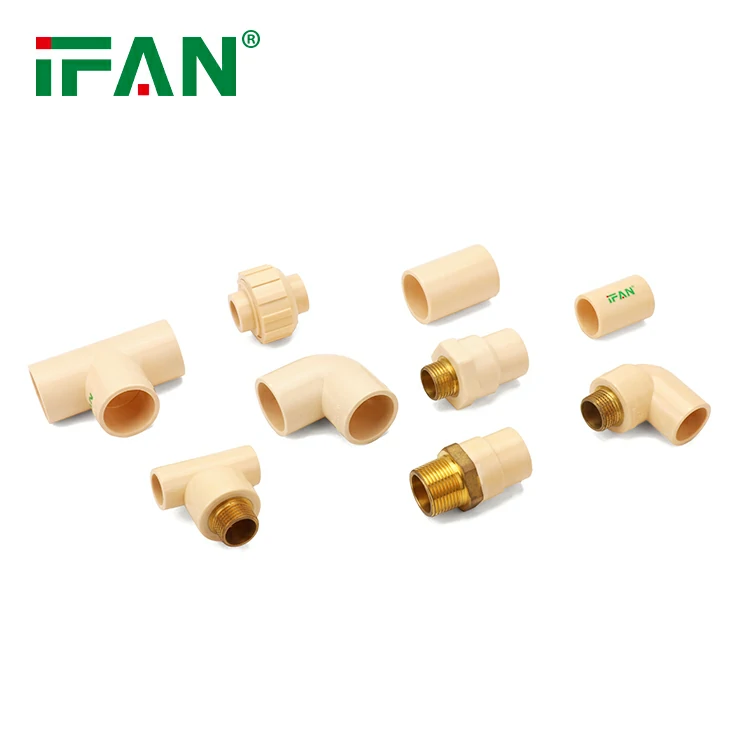
5. Difficulty in CPVC Fitting Installation
Problem: Installing CPVC fittings can be challenging for DIYers, especially if they are not familiar with the proper technique for solvent welding. Improperly installed fittings can result in leaks, disconnections, or weak joints.
Solution: To ensure proper installation, it is essential to follow the correct steps when installing CPVC fittings. Start by cleaning and priming the pipe and fitting before applying the solvent cement. Make sure to apply the correct amount of cement, ensuring even coverage. After fitting the pipe and fitting together, hold them in place for a few seconds to allow the cement to set. Always check that the pipe is fully inserted into the fitting and that there are no gaps.
6. Incompatibility with Other Materials
Problem:CPVC fittings are designed to work with CPVC pipes, but when combined with other materials, such as PVC or metal pipes, they may cause leaks, cracking, or other failures due to differences in thermal expansion and material composition.
Solution: To prevent incompatibility issues, it is essential to use CPVC fittings and pipes exclusively for CPVC systems. If you must connect CPVC to other materials, use proper transition fittings that are designed for this purpose. Always verify that the materials are compatible to avoid damage to the system.
7. Improperly Sized CPVC Fittings
Problem: Using the wrong size CPVC fitting can lead to leaks, poor flow, or even damage to the plumbing system. Common sizing issues include using too large or too small fittings for the pipe diameter.
Solution:To prevent sizing issues, always check the specifications of the pipe and fitting before installation. Measure the pipe diameter accurately and ensure the fitting matches the pipe size. Using the correct size fitting will help maintain water pressure and prevent leaks.
8. Failure to Maintain CPVC Fittings
Problem: CPVC fittings can develop issues if they are not regularly maintained or if they are subjected to rough handling, extreme pressure, or neglect. Failure to maintain your plumbing system can lead to leaks, breakages, or system failure.
Solution: Regular maintenance is key to ensuring the longevity of your CPVC system. Inspect fittings periodically for signs of wear or damage. Look for any visible cracks, leaks, or discoloration. Ensure that the system is not subjected to excessive pressure or temperature extremes. If maintenance is neglected and a problem arises, it may require professional assistance to fix the issue.
9. High Water Pressure Affecting CPVC Fittings
Problem: CPVC fittings are designed to withstand typical household water pressures, but excessive pressure can cause fittings to leak or even burst. High water pressure can also lead to stress on the joints, causing them to crack or separate.
Solution: If high water pressure is suspected, use a pressure gauge to test the system. The ideal pressure for most CPVC systems is between 40 and 60 psi. If the pressure exceeds this range, consider installing a pressure-reducing valve to regulate the pressure in your system. This will help prevent undue stress on the fittings and prolong the lifespan of the entire plumbing system.
10. Improperly Stored CPVC Fittings
Problem: CPVC fittings are susceptible to damage if they are improperly stored. Exposure to direct sunlight, excessive moisture, or extreme temperatures can cause the material to weaken, resulting in cracks or breaks during installation.
Solution: Store CPVC fittings in a cool, dry place, away from direct sunlight. Ensure that the fittings are kept in their original packaging until they are ready for installation. Avoid stacking heavy items on top of the fittings to prevent any physical damage. Proper storage helps preserve the integrity of the material until it is needed.
Conclusion
CPVC fittings are a reliable and cost-effective option for plumbing systems, but they are not immune to common issues. By understanding the potential problems and knowing how to troubleshoot and address them, you can ensure that your CPVC fittings continue to perform well for years to come. Regular inspection, proper installation, and good maintenance practices will help extend the life of your plumbing system.
Frequently Asked Questions (FAQ)
1. Can CPVC fittings be used for hot water?
Yes, CPVC fittings are designed to handle both hot and cold water. However, they should not be exposed to temperatures above 200°F.
2. How can I prevent leaks in CPVC fittings?
To prevent leaks, ensure proper installation by cleaning and priming the surfaces before applying solvent cement. Regularly inspect the fittings for signs of wear or damage.
3. Can CPVC fittings be used with other types of pipes?
CPVC fittings are best used with CPVC pipes. To connect CPVC to other materials like PVC or metal, use transition fittings designed for that purpose.
4. How can I fix a cracked CPVC fitting?
If a CPVC fitting cracks, the best solution is to replace the damaged fitting with a new one of the same size and material grade.
5. What causes CPVC fittings to turn yellow?
Discoloration is typically caused by prolonged exposure to UV light or high temperatures. While it may not affect functionality, it can be a sign of material degradation.
Related products
-
CPVC ASTM2846
Revolutionizing Fluid Control: CPVC Fitting Valve
-
CPVC ASTM2846
Elevating Piping Solutions: CPVC Fitting Elbow
-
CPVC ASTM2846
Cpvc heat resistant temperature


